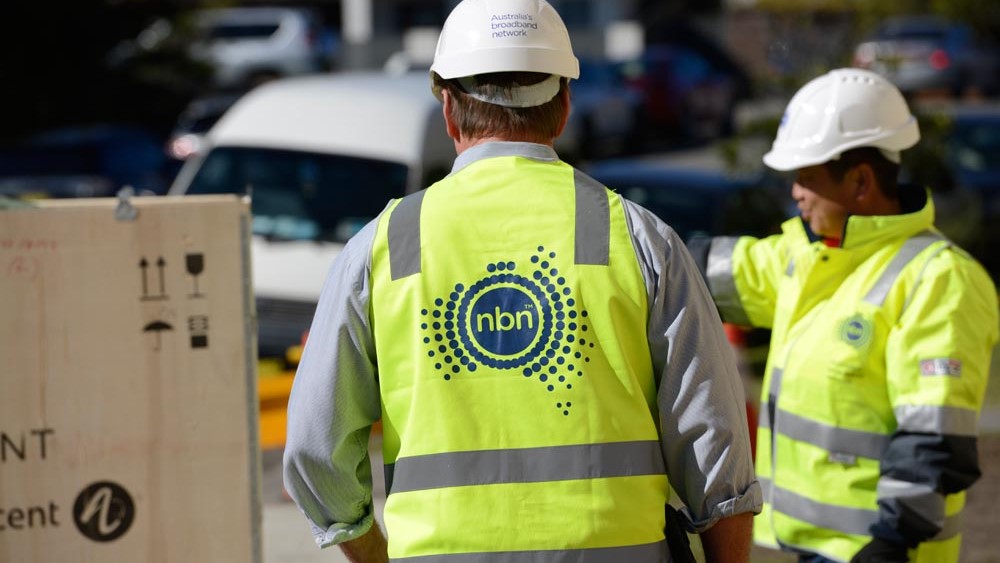Whichever party is elected in the looming federal election will set the direction for the next phase of the national broadband network (NBN), as the network is now confirmed for completion in less than two years.
According to the newly released nbn Corporate Plan 2019-2022 the completed network will be delivered by June 2020 at a total cost of $51 billion, some $2 billion over the previously estimated cost.
Some 7.043 million premises are ready to connect to the NBN, the company said, with 41,423 premises passed or covered by the network during the week to 23 August and 23,993 premises having services activated during the week.
Revenues doubled year-on-year to $2 billion in fiscal 2018, the company noted, with takeup of 50Mbps or faster services increasing from 16 percent of customers in June 2017 to nearly 45 percent this year.
But revenue expectations have softened, with projections from the previous NBN Co Corporate Plan 2018-2021 – which expected to see 8 million premises connected and revenues of $4.9 billion by 2020 – down considerably even as total expenditure was pegged at $51 billion, which is the high side of previous estimates.
By 2020, nbn now expects the network will reach its target of 11.7 million premises ready to connect, but projected revenues have been dialled back to $3.9 billion – delivering an internal rate of return (IRR) of 3.2 percent and putting the pressure on incoming CEO Stephen Rue.
Next steps for the nbn
Rue, the former CFO of nbn and News Corp Australia, this month replaced longtime CEO Bill Morrow and readily acknowledged that “there will inevitably be challenges in the remainder of the build – some known, some new. But our ability to deploy the network at speed and scale is evident.”
Yet even as he oversees the completion of the network, Rue will also be working with the government of the day to plan next steps for a network that some analysts say will need to be upgraded as soon as it’s complete – and others say should be sold off as soon as possible.
Should Labor take government, the party’s official platform suggests that Rue will be tasked with upgrading the network to incorporate more fibre.
“Because of the Coalition’s limited vision,” the policy says, “it will now need to be built in two stages rather than one.”
It remains to be seen whether that policy represents a return to Labor’s original vision of fibre-to-the-premises (FttP) connections, or instead doubles down on nbn’s newer fibre-to-the-curb (FttC) – which is currently expected to account for 8 percent of all premises connections.
Yet any future network investments will be weighed against competing imperatives, including the Coalition’s often-stated goal of selling the network to the private sector as soon as it is complete.
Minister for Communications and the Arts Mitch Fifield, among others, has repeatedly said that it is the Liberal Party’s “absolute intention to sell the NBN,” but some are concerned that moving too hastily would sacrifice the government’s last opportunity to shape the telecommunications market.
RMIT University senior lecturer Mark Gregory recently warned in a blog that the government should resist the urge to sell off the company, warning that “disruption should not be confused with chaos and the period after the sale of NBN Co as a disaggregated entity could be chaotic.”
“There is nothing to be gained by the government setting out on a chaotic path due to ideology,” he wrote in advocating a series of public inquiries and consultation period about the best way forward for the network.
“Disaggregation of NBN Co could reduce or remove the positive disruption that the NBN is having on the telecommunications industry... and the telecommunications industry could revert to circa 2005,” a time when government broadband development was hindered by a long-running standoff with the leadership of market monopolist Telstra.
Changing the conversation
While the industry debates next steps for the project, Rue will be leading a company that is trying to shift the conversation towards the network’s social impact and everyday relevance for the country.
The company last year started managing this shift by releasing a report, ‘gen nbn’, that outlines a vision for the network beyond 2020.
Australia is “currently at a tipping point,” that report noted, arguing that the network build “raises prospects for the realisation of new economic and cultural possibilities.... the next decades may see the normalisation and mainstreaming of technologies that have been experimental until now.”
“If the nation is to maximise the opportunities and meet the challenges,” it adds, “this will require a collective effort that builds upon and strengthens existing face-to-face connections and community-based engagement.”
“Without the necessary interventions, it is possible that Australia’s digital divide will deepen.”










